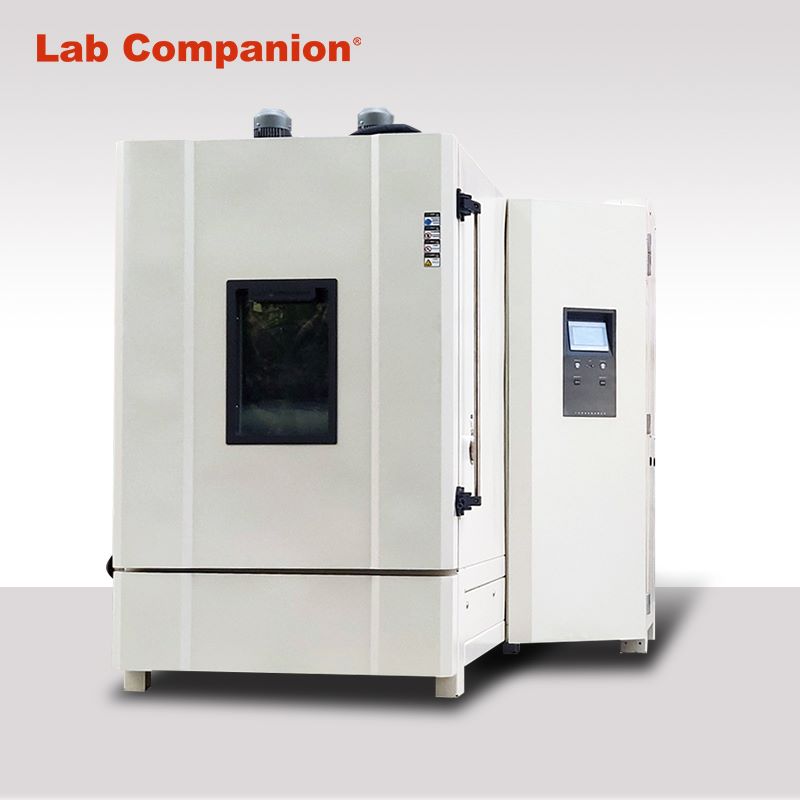This article analyzes the system architecture and technical characteristics of rapid temperature change test chambers, by systematically studying the technical parameters and functional design of key components, it provides theoretical guidance for equipment selection and process optimization.
1.Technical Principles and System Architecture
Rapid temperature change test chambers operate based on thermodynamic transfer principles, achieving nonlinear temperature gradient variations through high-precision temperature control systems. Typical equipment can attain temperature change rates ≥15℃/min within a range of -70℃ to +150℃. The system comprises four core modules:
(1) Heat exchange system: Multi-stage cascade refrigeration structure
(2) Air circulation system: Adjustable vertical/horizontal airflow guidance
(3) Intelligent control system: Multivariable PID algorithm
(4) Safety protection system: Triple interlock protection mechanism
2.Analysis of Key Technical Features
2.1 Structural Design Optimization
The chamber adopts modular design with SUS304 stainless steel welding technology. A double-layer Low-E glass observation window achieves >98% thermal resistance. The CFD-optimized drainage channel design reduces steam condensation to <0.5 mL/h.
2.2 Intelligent Control System
Equipped with Japan-made YUDEN UMC1200 controller.
2.3 Refrigeration System Innovation
Incorporates French Tecumseh hermetic scroll compressors with R404A/R23 refrigerants.
3.Safety and Reliability Design
3.1 Electrical Safety System
- Complies with IEC 61010-1 CLASS 3
- Schneider Electric components with full-circuit isolation
- Grounding resistance <0.1Ω
- Overcurrent protection response <0.1s
3.2 Multi-level Protection
- Triple-channel PT100 temperature monitoring
- Dual pressure switches
- Dry-burn humidity protection
- Emergency pressure relief valve
4.Technological Applications
(1) Aerospace: Thermal-vacuum testing for satellite components
(2) New energy vehicles: Battery pack thermal shock tests
(3) Microelectronics: Chip package reliability verification
(4) Materials science: Composite interlayer thermal stress analysis
5.Technological Trends
(1) Multi-stress coupling tests: Temperature-vibration-humidity simulation
(2) Digital twin integration: Virtual system modeling
(3) AI-driven parameter optimization: Machine learning-based curve tuning
(4) Energy efficiency: 40%+ heat recovery rate
Conclusion: With increasing reliability requirements in advanced industries, future development will emphasize intelligent operation, high precision, and multidimensional environmental simulation. Subsequent research should focus on integrating equipment with product failure mechanism models to advance environmental testing from verification to predictive analysis.
Click to view related products.
Lab Companion, your trusted brand.
